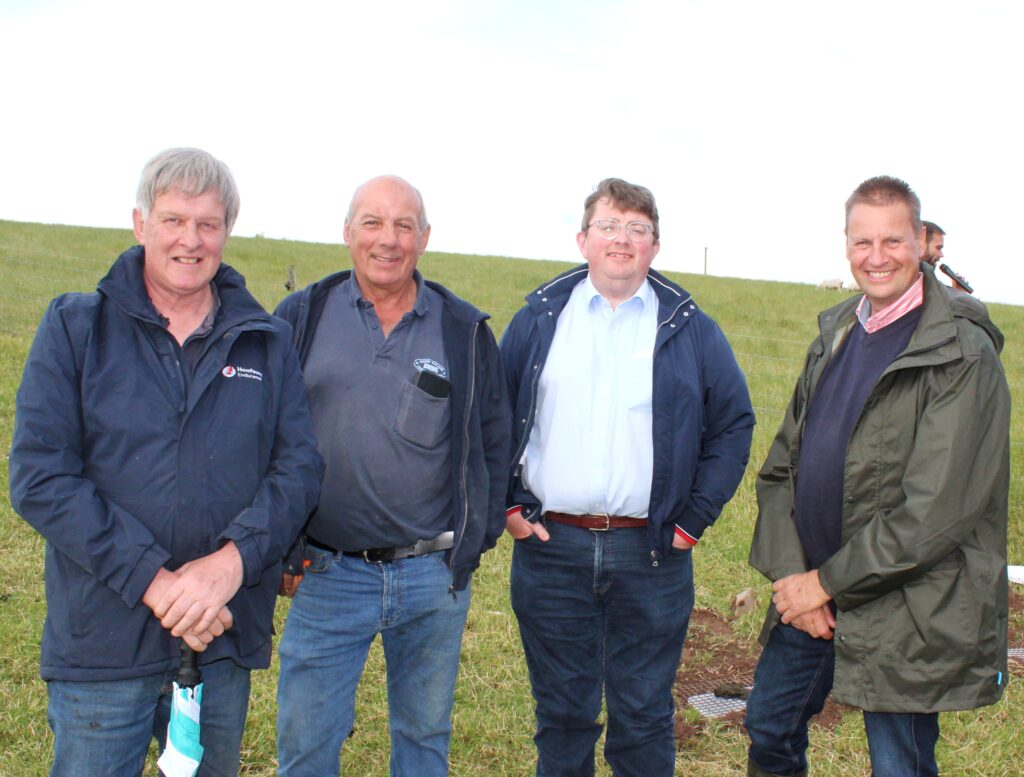Dung beetles can play a very important role in reducing the use of anthelmintics to control nematode worm burdens in livestock.
That is according to Co. Laois dairy farmer Bruce Thompson.
He believes this is because the beetles act to prevent L3 nematode larvae to move from dung pats out onto grass swards, where they can infect cattle and sheep.
Thompson took part in a parasite-control farm walk hosted recently by Co. Down sheep farmer John Martin.
Thompson said that dung beetles will act to “reduce nematode burdens” – but he also highlighted a problem.
Insecticides
Thompson warned: “Insecticides used to keep flies away from cattle and sheep will also pass into animals’ dung, where they will subsequently act to reduce beetle numbers. The chemical residues of wormers will also act to reduce beetle numbers.
“As a result, there is a strong link between insecticide usage and dung beetles’ potential to control nematode burdens.”
According to Thompson, less is more in this instance.
“My clear advice to farmers with breeding and other livestock is to use insecticides only when absolutely required,” he added.
Dung beetles
A key focus of the recent farm walk was to highlight new thinking on anthelmintic resistance (AR) and this is where dung beetles come in as they can act to bring numerous benefits to grass-based production systems.
In the first instance, they dry out and remove dung pats as they consume them. This process helps speed up the rate of decay of the pat as well as making it more appealing to earthworms.
In addition, when dung-burying beetles take the pat and bury it directly into the soil, they take it right at the roots of the grass plant, distributing natural fertiliser just where the plant needs it.
Dung pats are also a hatchery for parasitic worms ejected from livestock. These worms are in a very fragile state in pats, so any disturbance of them will disrupt their lifecycle.
Overall, dung beetles are a great tool to help naturally reduce parasite loading at pasture because there are several ways in which they can achieve this.

Beetles actually ‘drink’ dung pats, feeding on the bacteria-laden juices from animals’ stomachs. This drying effect has multiple benefits.
For example, lungworms often uses a fungus called Pilobolus to transport themselves from the pat to the leaf of the grass, ready for ingestion.
Drying hampers the fungus from growing and prevents the hatched parasite from moving their way to grass plants.
In addition, it is believed that fragile parasite eggs get damaged by the beetles as they source the bacteria which they feed on.
The burying effect of tunnelling beetles removes the parasites from the pasture and buries them into the soil.
Also, dung beetles are often used as a taxi for phoretic mites. These insects are unable to travel from pat to pat themselves due to their small size.
These mites have an important role to play as they consume fly eggs and, very probably, the larvae of gastrointestinal nematodes.
Bruce Thompson first developed an interest in dung beetles in 2020 when he started a Nuffield Scholarship.
On his own farm he has a particular interest in reducing animal remedies through prevention, with a focus on animal wormers.
He said he has made dramatic reductions in his wormer usage by making use of his farm microscope for diagnosis and pioneering new grazing strategies.
Thompson has also started a European Innovation Partnership (EIP) scheme, focusing on a targeted and selective approach to animal wormers in order to protect and increase dung beetle populations on the land.

He also breeds dung beetles on his farm.
Other nature actions taken on the Thompson farm include the management of hedgerows for biodiversity, planting additional hedgerows and incorporating multi-species swards into his grassland.
The Co. Laois farmer believes more focus must be paid to the integration of ecology and agriculture.
Thompson is confident that food production and environmental protection can, and must happen simultaneously.

